
When we engage in communication with strangers, we are evaluated based on four parameters. The first two are assessed within the first 5–10 seconds of the encounter, giving an understanding of whether the person likes us or not.
- Appearance. It is evaluated based on how we are dressed, our hairstyle, skin issues, and body language.
Recommendations:
a) Make a neat hairstyle that suits the shape of your head.
b) Use a moisturizer for your face to maintain youthfulness and prevent dryness, cracks, wrinkles, and other skin imperfections.
c) Practice exercises to develop a natural smile. If you notice that your smile looks forced in photographs, it happens because we tend to use muscles that are not intended for that purpose. - Voice and speech. How we speak also contributes to the initial impression. Does our tone sound confident? Do we use affirmative or questioning notes? Is our voice clear, or does it sound nasal or stutter? People subconsciously perceive these aspects. A well-projected voice inspires trust and creates an impression of success, as it opens many doors both in career and business.
Recommendations:
a) Allocate 15–20 minutes daily for exercises that strengthen your voice, and improve its resonance, intonation, and diction.
b) Record a 15-minute video daily where you talk about a certain topic. This helps you observe how you occupy physical space, use gestures, facial expressions, and, of course, your manner of speech. Over time, your monologues will become more energetic and lively.
c) Practice improvisation. A simple game is playing associations, for example: table — lunch — delicious — dessert — tea — China — wall — construction. I believe you understand the principle. This allows you to convert passive vocabulary into active, making your speech richer. Another practice is to say a sentence and come up with a different ending for it. Keep doing this until you get tired. For example, [Last night we visited three bars, and we returned home drunk and happy.] — [Happy people live in a colorful world, soaring above the gray reality.] Try to feel what you are talking about. Visualization is our only limit. - Tell about yourself. Now is the time to create texture. Talk about what you do and your hobbies. Your knowledge and experience make you unique and can generate genuine interest, providing topics for engaging conversations.
- Empathy. However, a dry enumeration of facts about oneself is not enough. It’s like an avatar in a game like The Sims. It lacks aspirations and dreams. Show depth, show that you are a living, feeling person. Last year, I read a guide on creating a company’s brand. One of the recommendations was to write down what you believe in. For example, if you brew craft beer to stand out from competitors who produce an identical product, tell the story of what you believe in, a story that resonates with the soul of your target audience. Do you understand? This applies to individual people as well.

UX researcher vs UX designer: what's the difference and why it matters
1. Introduction
Roles of UX researchers and UX designers
UX designers and researchers play different but equally crucial responsibilities in UX design. Through a variety of research techniques, including surveys, interviews, and usability testing, UX researchers focus on understanding users' needs and behaviors. In order to create user personas, user journeys, and other user-centered design artifacts, they examine the data collected from these investigations. On the other hand, it is the job of UX designers to transform these user insights into appealing and understandable user interfaces that support company goals. To produce wireframes, prototypes, and high-fidelity designs that match user needs and behaviors, they use design tools and techniques.
Confusion or misunderstandings about the difference between these roles
Despite the clear differences between UX researchers and UX designers, there are still some common misunderstandings or misconceptions about their roles. For example, some people may think that UX researchers only conduct surveys or that UX designers only make things look pretty. These oversimplifications can lead to underestimating the importance of each role and result in a suboptimal user experience.
Clarifying the difference and why it matters for startups
Understanding the distinction between UX researchers and UX designers and why it matters is essential for entrepreneurs. Startups can better understand their target customers by using UX research to create offerings that respond to their needs. Increased client satisfaction, loyalty, and revenue could come from this. On the other side, UX design makes sure that the product or service is aesthetically pleasing and simple to use, which results in a better user experience and higher engagement.
By providing a better user experience, startups that invest in both UX research and UX design can gain an advantage over their competitors. Startups can more effectively accomplish their business objectives and make better choices about their UX design approach by defining the differences between these roles and understanding the value of each one.
2. The role of UX researchers
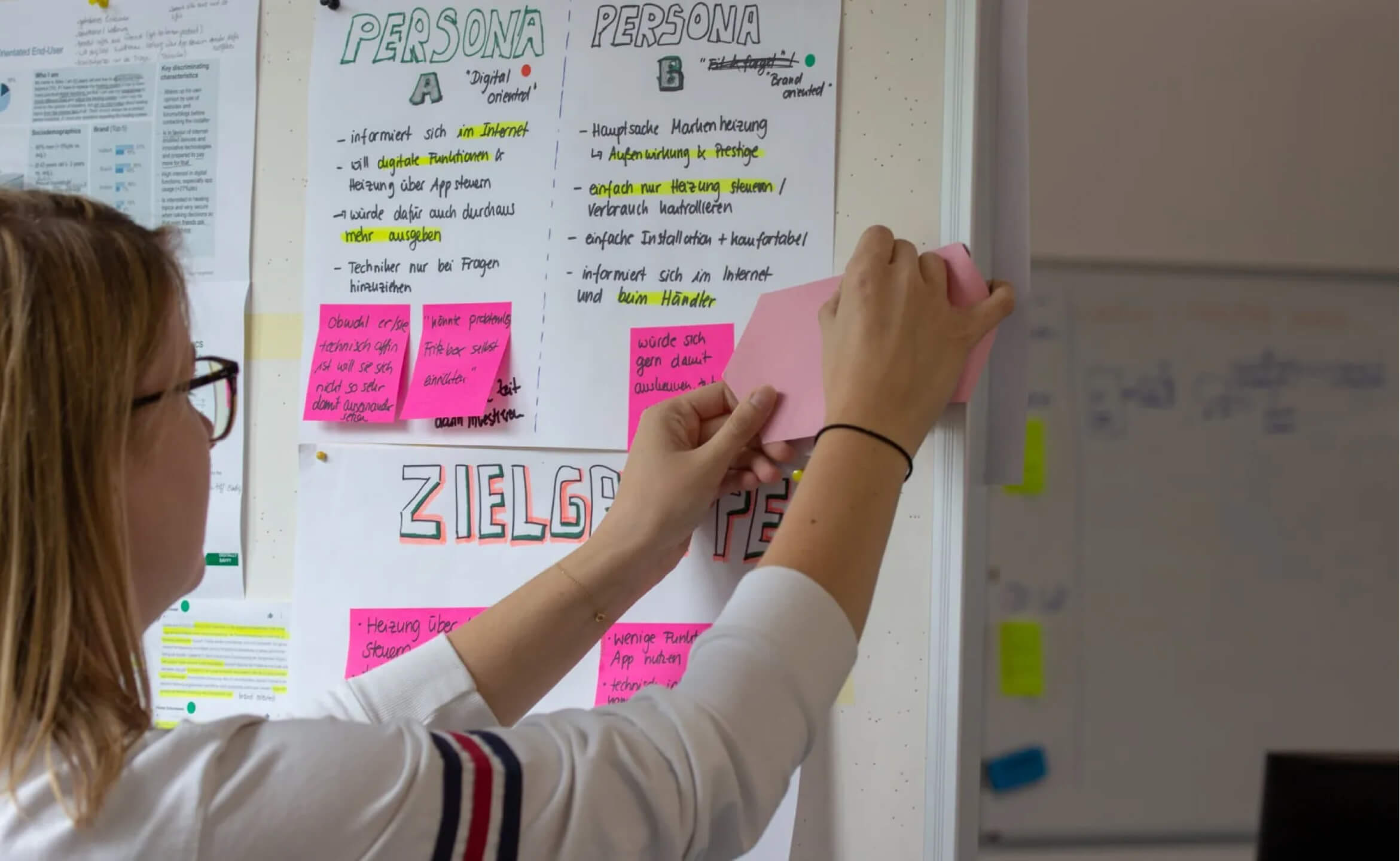
Definition and core responsibilities of UX researchers
UX researchers are experts who focus on comprehending consumers' requirements, actions, and attitudes around digital products and solutions. They are in charge of carrying out research studies and collecting data to guide the design process and guarantee that the final product or service satisfies user requirements. Some of the primary duties of UX researchers include the following:
- Conducting user research studies: To obtain knowledge of user demands, behaviors, and pain spots, UX researchers plan and carry out research projects like surveys, interviews, and usability testing. To gather quantitative and qualitative information regarding user experiences, they employ a range of research techniques.
- Analyzing data: UX researchers collect, analyse, and synthesize data to identify design trends and insights. To uncover key themes and patterns, they use various techniques and methods.
- Creating user personas and journeys: UX researchers develop user personas and journeys that reflect various user types and their objectives, behaviors, and motivations based on their research results. User journeys are visual depictions of the steps consumers take when using a product or service, and user personas are fictitious characters that reflect the essential traits of a certain user group.
- Collaborating with UX designers: UX researchers collaborate closely with UX designers to guarantee the incorporation of user-centered design principles during the design process. They provide input on design decisions and interact with users to validate design solutions. UX researchers aid in ensuring that design decisions are grounded in user data and insights, as opposed to assumptions or personal preferences.
Skills and expertise required for UX research
Gathering and analyzing user data in UX research takes certain talents. UX researchers need these skills:
- Research methods: UX researchers should be familiar with several types of research methods, including surveys, interviews, focus groups, and usability tests. They should understand how to choose the appropriate research method depending on the research issue, set up conduct research studies, and analyze and interpret research findings.
- Data analysis: UX researchers need data analysis skills to synthesize data and make judgments. They should be able to discover data patterns and trends using statistical analysis methods.
- Human behavior: UX researchers should know how people think, feel, and use digital products and services. They should understand and apply user behavior to design decisions.
- Empathy: UX researchers should be empathetic to understand users' needs and feelings. They should be able to put themselves in the users' shoes and see the product or service from their perspective.
- Communication: UX researchers should be good communicators who can explain study findings to stakeholders. They should transform research findings into design team suggestions.
- Collaboration: UX researchers should be able to work with cross-functional teams that include UX designers, product managers, and coders, among others. They should be able to work well as a part of a team and be ready to hear different points of view.
Examples of UX research methods and tools
UX researchers collect data about user needs, behaviors, and preferences using a variety of research approaches and tools. Here are some typical UX research methods and tools:
- Surveys: Surveys are a common method for collecting information from a large number of users. One can conduct surveys online, via email, or in person. They can supply quantitative information regarding user preferences, behaviors, and attitudes.
- Interviews: Interviews are a research technique used to elicit in-depth data from specific users. These meetings can be held in person, on the phone, or by video conferencing. User needs, aspirations, and pain areas can be revealed through interviews in qualitative form.
- Focus groups: Focus groups are a research technique used to compile information from a group of users. A moderator guides a discussion on a particular subject during these often in-person events. The ideas, attitudes, and actions of users can be better understood through the utilization of focus groups.
- Usability testing: Usability testing is a research technique used to assess a product's or service's usability. Users are prompted to do particular tasks while being watched and recorded for their interactions. Usability testing can give information about the user experience and point out areas where the design needs to be improved.
- A/B testing: A/B testing is a research technique used to compare the performance of two or more variations of a good or service. Quantitative information about user preferences and behavior can be obtained through A/B testing.
- Card sorting: Card sorting is a research technique used to collect information on how individuals classify and organize information. Users are tasked with categorizing objects according to their similarities. Card sorting can reveal how users conceptualize and organize information.
- Heat maps: Heat maps are a type of visual aid that display user activity on a website or other digital product. Data regarding the parts of a website or product that consumers find most interesting can be found in heat maps.
- Eye-tracking: Eye-tracking is a research technique that measures where consumers glance on a website or digital product. Eye-tracking can provide information on where users focus their attention and how they engage with the design.
Benefits of UX research for user-centered design and business goals
UX research can assist both user-centered design and business objectives. Here are some of the key advantages:
- Understanding user needs: UX research can aid in determining user requirements and pain factors. By understanding the requirements of the users, designers can create user-centered designs that satisfy those needs and enhance the user experience.
- Identifying opportunities: UX research can assist in locating potential areas of improvement or untapped potential for innovation in a product or service. Designers can pinpoint places where new functions or products might be created to better serve users' requirements by understanding user behavior and preferences.
- Reducing risks: UX research can aid in the reduction of risks connected with product development. By soliciting user feedback early in the design process, designers can spot possible problems and make changes before the product is released.
- Improving user satisfaction: UX research can assist boost customer satisfaction by ensuring that the product or service fulfills their needs and preferences. A pleasant user experience can lead to improved user engagement, loyalty, and word-of-mouth recommendations.
- Increasing ROI: UX research can assist raise a product or service's return on investment (ROI) through enhancing user engagement, lowering development costs, and boosting sales. Designers may develop products and services that more effectively fulfill users' requirements and advance company objectives by studying user behavior and preferences.
In general, UX research is essential for developing products that satisfy customer wants and corporate objectives. Businesses can boost user satisfaction, lower development costs, increase income, gain a competitive edge, and enhance their brand reputation by investing in UX research and adopting a user-centered design methodology.
3. The role of UX designers
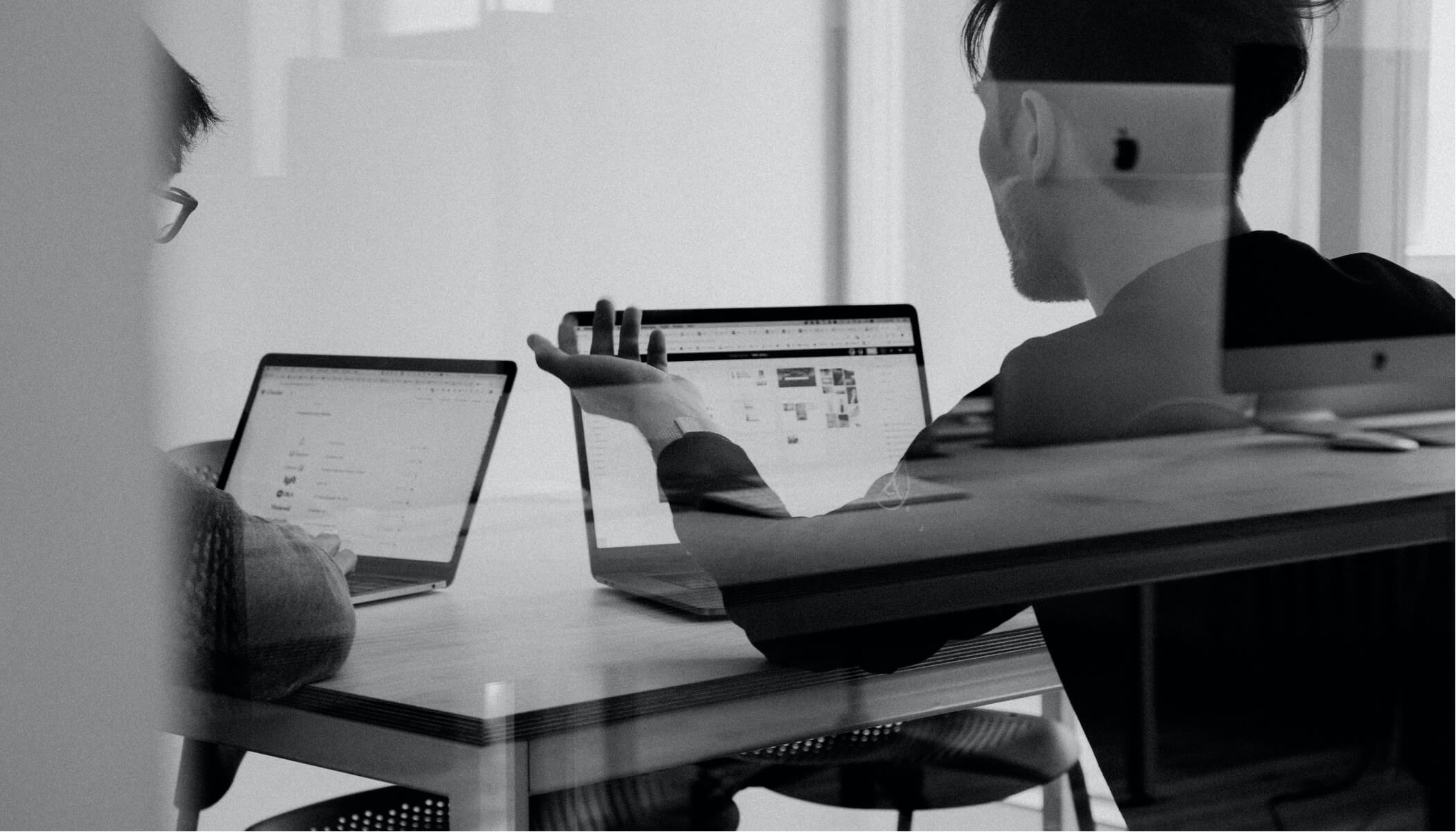
Definition and core responsibilities of UX designers
UX designers create a product's user experience. They collaborate with UX researchers and other designers to build intuitive, user-friendly interfaces that satisfy target audience needs. UX designers have the following duties:
- Understanding user needs: UX designers must have a comprehensive comprehension of the requirements and preferences of the intended audience. This necessitates user research and feedback collection to inform the design process.
- Creating user-centered designs: UUX designers must build designs that are straightforward and simple to use, having the user experience in mind. Wireframes, prototypes, and other design elements are created to test and refine the user interface.
- Collaborating with other designers: UX designers frequently collaborate with visual designers, product managers, and other stakeholders to develop a unified design strategy as part of a larger design team.
- Incorporating brand and design guidelines: UX designers must consider brand and design guidelines while building user interfaces. This assures brand consistency and message delivery.
- Staying up-to-date with design trends and best practices: UX designers must remain up-to-date on the most recent design trends and best practices to ensure that their designs are contemporary, engaging, and effective.
Skills and expertise required for UX design
UX designers need a variety of talents and knowledge. Key ones:
- User research: While UX designers may not conduct research themselves, they must be able to collaborate effectively with UX researchers to comprehend user requirements and preferences.
- Design software: UX designers must know Sketch, Adobe Creative Suite, and Figma. They can generate high-quality wireframes, prototypes, and other design elements.
- Information architecture: UX designers must grasp information architecture and how to organize and structure content for easy navigation.
- Interaction design: Interaction design is an important part of UX design since it involves the creation of user interactions with digital products. UX designers must be able to construct user-friendly interfaces that respond to user activities.
- Visual design: While UX designers may collaborate closely with visual designers, they must also be well-versed in visual design principles such as typography, color theory, and layout.
- Collaboration: UX designers must be able to collaborate with other design team members as well as stakeholders from other departments such as product management and engineering.
- Communication: Finally, UX designers must be able to effectively communicate their design decisions and rationale to other members of the design team and organization-wide stakeholders.
Examples of UX design deliverables and processes
During the design process, UX designers create many deliverables. Common examples:
- User personas: UX designers use research data to create user personas, which are fictional representations of the target audience. These personas help designers keep user needs and goals in mind as they create design solutions.
- Wireframes: Wireframes are low-fidelity designs that show the basic layout and structure of a digital product. They help designers plan out the user interface and make sure key content and functionality are included.
- Prototypes: Prototypes are interactive versions of a design that allow designers to test user interactions and receive user input. Low-fidelity paper prototypes to high-fidelity interactive prototypes are examples.
- Design specifications: Design specifications are precise documents that explain how the final design should look and perform. They contain information about font, colors, layout, and other design components.
- Usability testing: Usability testing is putting the design through its paces with people in order to uncover usability concerns and gain comments on the design. This feedback is used by UX designers to improve the design.
UX designers use a multi-step user-centered design process:
- Discovery: In this stage, designers conduct research to understand user needs and goals.
- Design: In this stage, designers create wireframes, prototypes, and other design deliverables.
- Testing: In this stage, designers test the design with users and gather feedback.
- Iteration: Based on the feedback received, designers make improvements to the design and repeat the testing process.
By following this process and creating deliverables such as user personas, wireframes, and prototypes, UX designers can create designs that meet user needs and business goals.
Benefits of UX design for user-centered design and business goals
User-centered design and UX design can help firms succeed. UX design benefits:
- Improved user experience: By designing products with user needs and goals in mind, UX designers may make user-friendly products. User satisfaction and product uptake may grow.
- Increased engagement: By creating visually appealing and interactive designs, UX designers can assist enhance product engagement. This can result in more utilization and better business results.
- Reduced development costs: By designing products with user needs in mind, UX designers may assist firms in avoiding costly design modifications later in the development process.
- Improved brand reputation: By creating products that are well-designed and easy to use, businesses may strengthen their brand reputation and position themselves as a firm that prioritizes customer experience.
- Competitive advantage: By focusing on user-centered design and creating products that meet user needs, businesses may distinguish themselves from competitors and acquire a market edge.
By investing in UX design and following a user-centered design approach, businesses may enhance the user experience, increase engagement, minimize development costs, boost brand reputation, and gain a competitive edge.
4. Collaboration and communication between UX researchers and UX designers
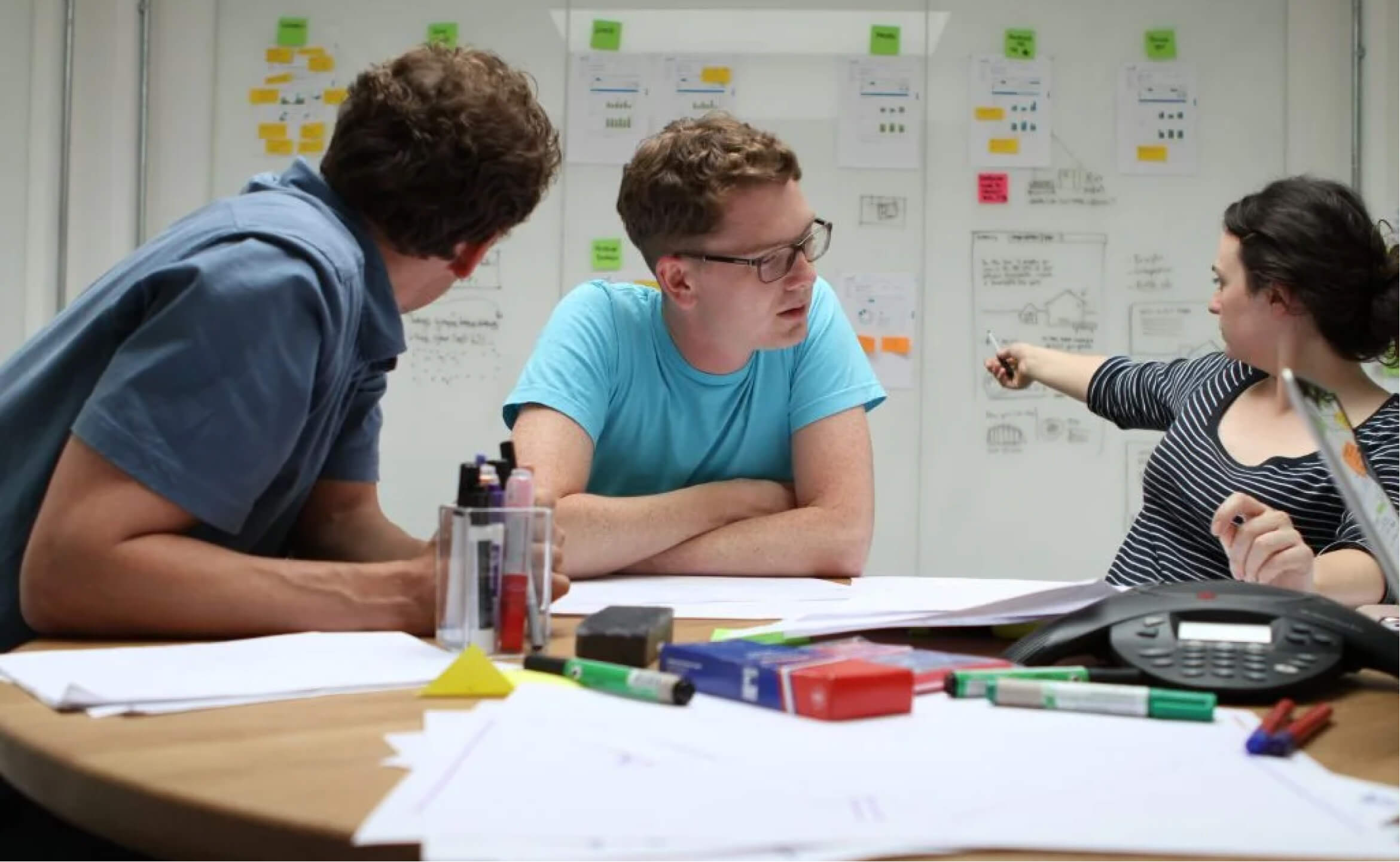
While UX researchers and designers have distinct roles and responsibilities, it is critical for them to effectively collaborate and communicate in order to create successful products. Here are some of the reasons why teamwork is essential:
- Holistic understanding of user needs: UX researchers can provide valuable insights about user needs and behavior, while UX designers can use these insights to create designs that meet those needs. Collaboration can help ensure that both perspectives are taken into account.
- Efficient design process: By working closely together, UX researchers and designers can minimize misunderstandings and rework, resulting in a more efficient design process.
- Alignment on goals: By working together, UX researchers and designers can ensure that the product design meets both user needs and corporate objectives.
- Improved outcomes: By creating a cohesive user experience, businesses can achieve better outcomes, such as higher user satisfaction and increased product adoption.
Collaboration, on the other hand, can be difficult. Common difficulties include:
- Communication breakdowns: UX researchers and designers may use different language or have different priorities, leading to misunderstandings and communication breakdowns.
- Time constraints: UX research and design can be time-consuming, and conflicting deadlines can make it difficult to collaborate effectively.
- Resistance to feedback: Designers may be resistant to feedback from researchers, or researchers may struggle to communicate their insights effectively.
To overcome these obstacles, it is critical to cultivate a productive and positive working relationship between UX researchers and designers. Here are some suggestions:
- Foster a culture of openness and collaboration: Encourage open communication and collaboration from the outset of the project.
- Establish shared goals and priorities: Ensure that both UX researchers and designers are aligned on the project goals and priorities.
- Create a shared understanding of user needs: Collaborate to develop a shared knowledge of consumer demands and how they might be satisfied through product design.
- Provide opportunities for feedback and iteration: Allow for feedback and iteration throughout the design process, so that researchers and designers can refine their work together.
Businesses may overcome common problems and produce successful products that fulfill user requirements and business goals by following these suggestions and fostering a collaborative culture.
5. Hiring or building a UX team for your startup

Building a great UX team is critical for developing successful products that meet both user needs and company objectives. Here are some things to think about when hiring or forming a UX team:
- Business goals: Consider the business goals you want to achieve through your product, and what role UX research and design will play in achieving those goals.
- Budget: Consider your budget and what you can realistically afford in terms of salaries, tools, and resources for your UX team.
- Product complexity: Consider the complexity of your product and what level of UX expertise will be required to design and research it effectively.
- Company culture: Consider the values and culture of your company and what kind of candidates will fit well with your team.
- UX maturity: Consider your current level of UX maturity and what kind of talent will be needed to take your UX to the next level.
When hiring or building a UX team, it's important to understand the differences between UX researchers and designers. UX researchers typically have backgrounds in fields like psychology or anthropology and are skilled in research methods such as usability testing, surveys, and interviews. UX designers, on the other hand, typically have backgrounds in design or visual arts and are skilled in creating wireframes, prototypes, and design systems.
When evaluating candidates for your UX team, consider their skills, experience, and fit for your startup. For UX researchers, look for candidates with experience in research methods that align with your product goals. For UX designers, look for candidates with strong portfolios and experience designing for similar products or industries.
When onboarding and integrating UX researchers and designers into your team, it's important to establish clear expectations and processes for collaboration. Provide opportunities for cross-functional collaboration and ensure that both UX researchers and designers have a clear understanding of the business goals and user needs. Invest in tools and resources that support effective collaboration, such as design systems and research repositories.
By considering these factors and best practices, startups can build strong and effective UX teams that drive the success of their products.
6. Conclusion
In summary, UX researchers and UX designers are two distinct roles with complementary responsibilities in the user-centered design process. UX researchers focus on understanding user behavior and needs through various research methods, while UX designers use this research to design and create user interfaces that meet those needs.
Importance of understanding and valuing both roles for user-centered design and business success
While both roles have different skill sets and responsibilities, they both play a critical role in achieving successful user-centered design and business goals. UX research provides valuable insights into user behavior and preferences, which help UX designers create user-friendly and effective interfaces. By understanding and valuing the contributions of both roles, startups can create products that are not only aesthetically pleasing but also solve real user problems, leading to better business outcomes.
Call to action for startup founders to invest in UX research and design, and empower their teams to collaborate effectively.
For startup founders, investing in UX research and design can lead to better user experiences, increased customer satisfaction, and ultimately, better business outcomes. By hiring or building a strong UX team, startups can ensure that they are creating products that are user-focused and meet the needs of their target audience. It's also important for startup founders to foster collaboration and communication between UX researchers and designers, creating an environment where both roles can work together effectively and create products that meet business goals while addressing user needs.

I lost my curiosity. How to get it back?
Curiosity plays an important role in the creative process, promoting more effective learning and enjoyment of it. To stay at the forefront of a rapidly changing world of progress, it is necessary to constantly develop and have a healthy curiosity.
Constraints such as mental or physical fatigue, limited time due to work and other obligations, can hinder the acquisition of new knowledge. However, to overcome these barriers, we must find the internal drive to take action.
Refusing to cultivate curiosity makes life dull and monotonous. We become routine performers if we do not allow ourselves to be curious and explore the unknown. As a result, we find ourselves in a world that weighs us down and demands change. External factors such as pleasant entertainment and socializing may bring pleasure, but internally, we still remain empty.
Ask ourselves simple questions
To revive our curiosity, we must connect with our inner child and revive the sense of wonder within us. By asking ourselves a simple question, "What do I want to do right now?" we can discover our hidden interests and regain the joy of learning and exploration.
For those working on projects with deadlines and high-quality requirements, it is important to find ways to incorporate an element of play into the work process. Allocating time during the day to seek answers to the question, "What if...?" and allowing ourselves to experiment and explore new ideas can increase engagement and interest in our work.
Giving employees the freedom to pursue their interests
Applying critical and design thinking techniques adds a playful element to the work process and allows us to express our curiosity while increasing employee engagement and interest. They will see work not just as a duty but as an opportunity for creativity, coming to the office with enthusiasm and joy, like children in a sandbox where they can build fantastic castles.
Certainly, granting freedom to employees can be a challenge for businesses, but it is important to understand that a curious and motivated team contributes to increased productivity and better business results. Therefore, it is necessary to find a balance between employee autonomy and company priorities.
Conclusion
The loss of curiosity is a common problem, but it can be overcome. By reconnecting with our inner child, asking ourselves what we truly want to do, and giving ourselves the freedom to develop our interests, we can revive our curiosity and achieve greater success in both personal and professional life.
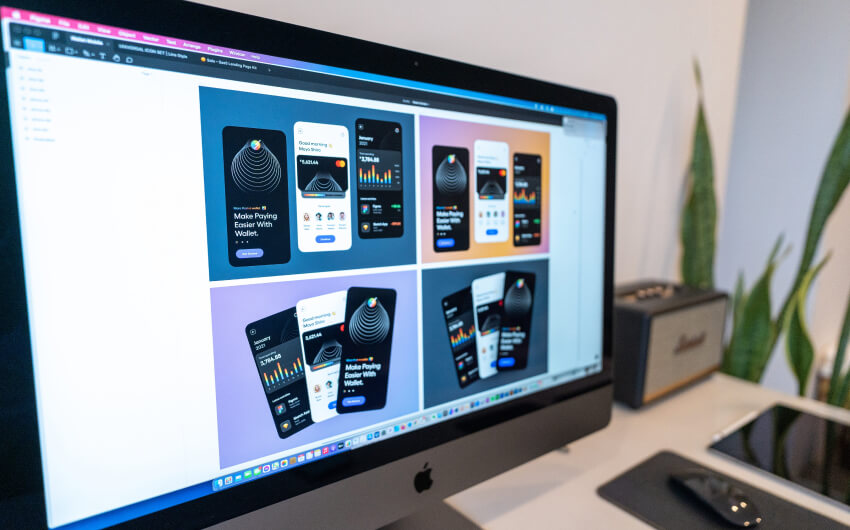
AI UX design: a new way of designing
The field of User Experience (UX) design has come a long way over the years, with companies recognizing the importance of providing users with seamless and intuitive digital experiences. The growth of technology has enabled designers to create digital products that are not only aesthetically pleasing but also easy to use and responsive. One of the latest innovations in UX design is the integration of Artificial Intelligence (AI) into the design process. AI has the potential to revolutionize the way digital products are designed, and it’s essential to understand how AI is changing the UX design landscape.
AI-powered UX design uses AI algorithms and machine learning to gain insights into user behavior and preferences. This information can be used to create digital products tailored to meet specific user needs, based on real-world data and analytics. For example, by analyzing user behavior patterns, AI can help designers create personalized experiences that provide users with customized recommendations and suggestions. This can enhance the overall user experience and provide a more engaging and meaningful interaction with the digital product.
Another benefit of AI in UX design is its ability to optimize the design process itself. AI can automate various design tasks, such as prototyping and testing, freeing up designers to focus on more creative aspects of the process. This can result in faster, more efficient design cycles and allow designers to experiment with new ideas and concepts more freely. For instance, AI can analyze user data and test different design concepts to identify which one works best for a particular audience. This can help designers make data-driven design decisions, resulting in better user experiences and higher user engagement.
AI can also help designers overcome some of the limitations of traditional UX design methods. For example, UX design often involves conducting user research to understand user needs and preferences. This can be time-consuming and expensive, but AI can help automate the research process and provide designers with real-time data and insights. This can help designers create more user-centered designs based on user behavior and needs.
In conclusion, AI-powered UX design is the future of the field. It offers designers new and innovative ways to create digital products that provide personalized experiences and deliver meaningful interactions with users. By harnessing the power of AI, designers can create digital products that are not only user-friendly but also intelligent, responsive, and efficient. The potential for AI in UX design is limitless, and it will play an increasingly important role in shaping the future of digital experiences.
However, it’s important to note that AI-powered UX design is still in its early stages, and designers need to be cautious when incorporating AI into the design process. Designers must ensure that AI-powered solutions align with the values and goals of the company and that they are designed with the end user in mind. The goal of AI in UX design should always be to enhance the user experience, not replace it. As technology continues to evolve, designers will have new opportunities to explore the full potential of AI in UX design.

How to give feedback: a step-by-step guide
Challenges of giving feedback
Giving effective feedback is crucial for success in a startup environment. However, it can be challenging. It's essential to strike the right balance between motivating your team and avoiding demotivation. Here are some of the challenges that faces when giving feedback:
- Time constraints: In a startup, there's often a lot to do, and it can be difficult to find time to provide feedback. It's essential to make feedback a priority, even if it means carving out time in your schedule specifically for this purpose.
- Balancing positive and negative feedback: you want to provide guidance that motivates your team members to do their best work without discouraging them. It's essential to balance positive and negative feedback to ensure that your team members are motivated and engaged.
- Providing actionable feedback: Feedback should be specific, actionable, and lead to tangible results. It's crucial to provide examples and concrete suggestions for improvement to ensure that team members understand what they need to do to improve their work.
Despite these challenges, there are practical tips that you can use to give effective feedback. In the rest of this post, we'll cover tips for framing feedback positively, being specific and actionable, and setting clear expectations for improvement. By following these tips, you can become a master feedback giver and help your team members thrive.
Framing feedback positively
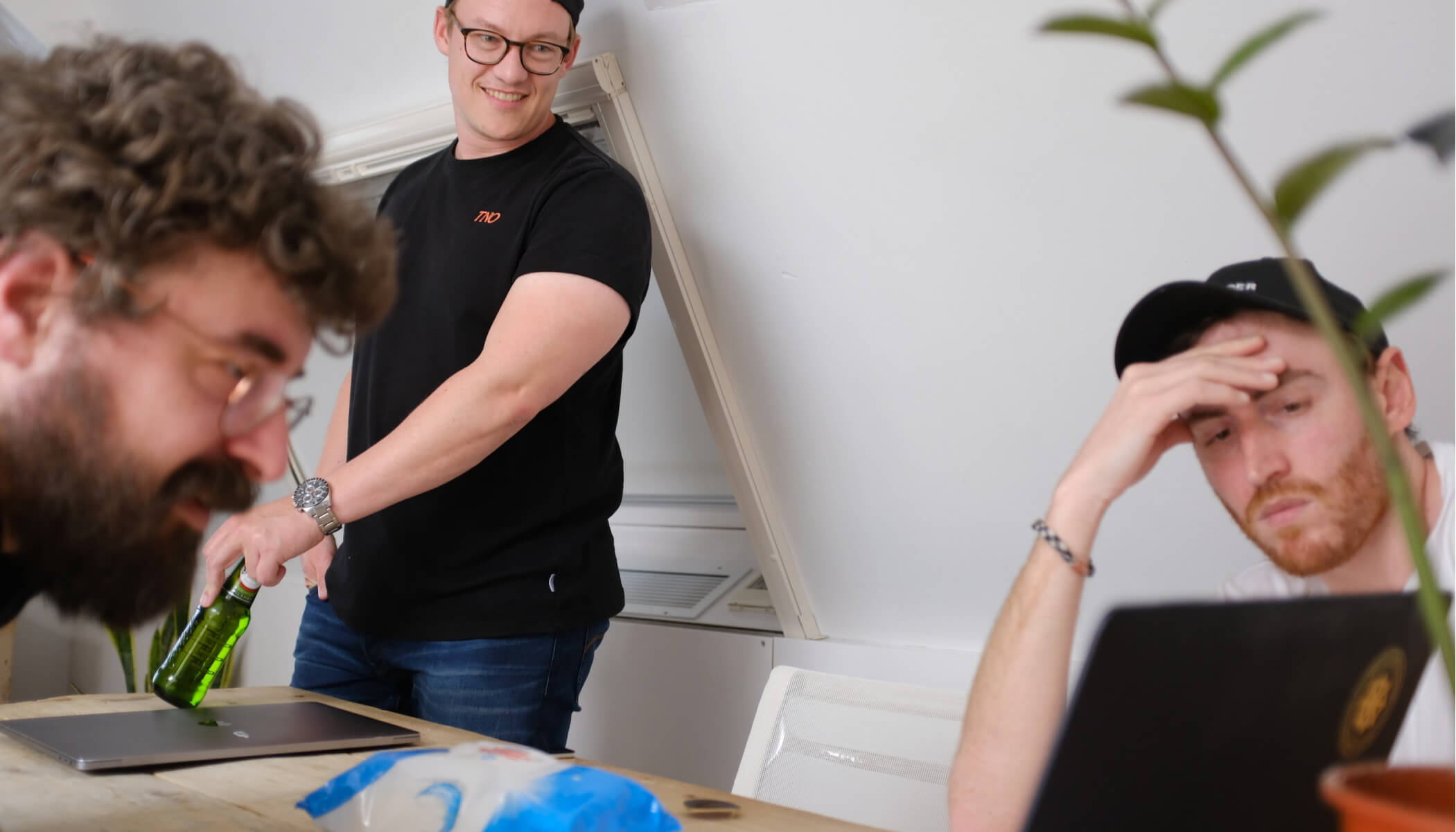
1. The importance of starting with positive feedback
It's essential to start with positive comments when providing feedback. This entails starting the conversation by complimenting the team member's contributions. Setting a good tone for the talk with positive feedback at the outset might make the team member feel valued and appreciated.
Building trust and safety from the beginning is another benefit of positive feedback. By starting with what the team member is doing well, you're creating a sense of safety and trust, which could make it easier for the team member to receive criticism. Starting with criticism can foster a defensive and demoralizing environment that makes it difficult to have an honest and enlightening conversation.
Starting off strong can help generate momentum, which is another advantage. You may give a team member a sense of momentum that will help them succeed by praising what they are doing well. This may encourage the team member and increase their receptivity to criticism.
2. Using "I" statements to avoid coming across as accusatory
Giving feedback can be difficult, particularly when it involves giving bad comments. Using "I," remarks rather than "you" comments can help the feedback conversation become more constructive. By using "I" statements, you can avoid sounding accusatory and foster a discourse that is more helpful and cooperative.
Using the pronoun "you" can come out as accusatory and put the team member on the defensive. For instance, telling a team member that they "didn't follow the project plan" can make them feel guilty and foster a bad environment. Use "I" statements that concentrate on your feelings and perceptions as an alternative. Using language like "I noticed that the project plan wasn't followed, and I'm concerned about how this might impact the project timeline" can be more productive and foster collaboration.
Additionally, using "I" phrases can aid in preventing misconceptions. By expressing your ideas and thoughts through "I" statements, you provide the team member with a better understanding of your viewpoint. This can assist to prevent misconceptions and make the dialogue more fruitful.
Finally, employing "I" expressions can foster a climate of respect and trust. You take ownership of your thoughts and feelings when you employ "I" phrases. As a result, it may be simpler for you and the team member to have future conversations about offering constructive criticism.
3. Examples of positive framing in feedback
Giving meaningful feedback requires using positive framing. Even when providing constructive criticism, positive framing requires emphasizing the good qualities of a team member's performance. Feedback can be presented in a way that encourages growth and development in the team member by putting it in a positive context.
Here are some instances of constructive feedback framing:
- Instead of saying "Your presentation was too long," try saying "Your presentation was informative and detailed. To make it more effective, let's work together to shorten it."
- Instead of saying "Your work on this project was subpar," try saying "Your work on this project had a lot of potential. To make it even better, let's work on refining some of the details."
- Instead of saying "You made a mistake in this report," try saying "Your report was very well written, but there is an opportunity to improve it by addressing a small error."
- Instead of saying "Your communication could be better," try saying "Your communication has improved a lot, and we can work together to continue to enhance it."
You can give constructive feedback that recognizes the team member's abilities and identifies specific areas for growth by using positive framing in your comments. A more positive work environment, where team members feel valued and inspired to develop, can be produced with the aid of positive framing.
Being specific and actionable

When it comes to providing feedback, specificity is key. Vague feedback such as "good job" or "needs improvement" isn't helpful because it doesn't provide any specific information on what the team member did well or what they need to work on. Providing specific feedback helps team members understand exactly what they did well and what areas they need to improve, which leads to actionable and tangible results.
To provide specific feedback, it's important to be specific about the behavior or action that you're referring to. For example, instead of saying "You need to be more proactive," you could say "I noticed that you haven't been following up with your tasks until the last minute. To improve your proactivity, let's work together to create a schedule for your tasks so that you can stay on top of them."
It's crucial to be concrete and to offer specific recommendations for improvement. Members of the team can better grasp how to advance and what they can do to create improvements as a result. As opposed to saying, "Your writing needs development," you might add, "I noticed that you frequently utilize passive voice in your writing. Let's focus on recognizing instances of passive voice and switching to active voice in order to get better.
You may give actionable feedback that yields noticeable outcomes by offering precise criticism and explicit suggestions for change. It's crucial to keep in mind that the purpose of feedback is to assist team members in improving, and attaining this objective requires precision and practical comments.
Setting clear expectations for improvement

To make sure that team members understand precisely what they need to focus on and how they may make progress, it is crucial to establish clear goals for improvement. Use the SMART goal framework for establishing objectives for improvement. Specific, measurable, attainable, pertinent, and time-bound is the acronym for SMART goals.
Team members are aware of the precise tasks they must complete because of the clear and well-defined specific goals. Measurable goals are quantifiable, allowing team members to monitor their development and gauge their progress. Realistic and reachable goals enable team members to achieve significant progress without getting frustrated. Relevant goals support team success since they are in line with each team member's responsibilities and position. Time-bound goals have a deadline, which gives team members a sense of urgency and inspires them to go forward.
To communicate expectations effectively, it's important to be clear and specific about what you're looking for. Make sure to explain the reasoning behind the goals and how they will contribute to the team's overall success. Encourage team members to ask questions and clarify any points of confusion. And don't forget to provide support and guidance along the way.
By setting clear goals for improvement using the SMART framework, you can ensure that team members understand exactly what they need to work on and how they can make progress. By communicating expectations effectively, you can create a supportive environment where team members feel empowered to take ownership of their work and make meaningful contributions to the team's success.
Conclusion
To recap, here are some tips for giving effective feedback in a startup environment:
- Start with positive feedback to establish a supportive environment.
- Use "I" statements to avoid coming across as accusatory.
- Frame feedback positively to inspire action and improvement.
- Be specific in your feedback and provide concrete examples for improvement.
- Set clear goals for improvement using the SMART framework.
- Communicate expectations effectively to create a supportive work environment.
Your team will work in a more productive and encouraging environment if you use these suggestions while providing feedback. Giving useful feedback is crucial for increasing performance, identifying problem areas, and thriving as a startup. Recall to use an attitude of growth when receiving comments and to emphasize progress more than criticism.
In conclusion, receiving input is crucial to the success of startups. You can support your team members' growth and development, assist them find areas for improvement, and eventually help them accomplish their objectives by giving them useful feedback. Accepting feedback as a potent instrument for improvement and development shouldn't be feared. Adopting the appropriate strategy and frame of mind may foster a more effective and productive startup environment.

It’s time to take creative professionals seriously
If you’ve never been asked the question, “What’s your real job?”, consider yourself lucky.
For those of us who are creatives pursuing our creative paths, our life choices have definitely been put into question. We’ve been advised against pursuing our dreams by family and strangers alike. We’ve been viewed as irresponsible. And we’ve been scrutinized.
For simply loving something enough to go for it.
“I paid for most of x-ray school through background acting jobs. Now, I’m training and working as an actor when I can while my full-time job is in the medical field,” says Jana. “I pretty much live two separate lives and when or if my medical peers find out about it, it’s almost instant scrutiny. Talk about exhausting.”
Exhausting is a great word to describe a creative person’s constant need to defend their choices. Unfair is another one. Ridiculous makes the list. And that’s only the beginning.
When we were younger, the majority of us were encouraged to participate in extracurriculars. Our guardians enrolled us in dance classes, chess camp, soccer at our local playground, or perhaps we had a mentor who encouraged us to lean into our creative side. Participating in activities like these, outside of our regular education, made us “well-rounded” and gave us something to look forward to after spending eight hours a day learning the Pythagorean Theorem.
But, when we enter the job force, or when high school and college rolls around, suddenly, we’re discouraged from focusing too heavily on the arts. Why join an art class when you can take a STEM class instead? You want to be in art club? Don’t you think Spanish club would be more beneficial? You want to be in the school play and rehearse after school? What about finals?
Almost overnight, we were drained of our creativity and thrust into a more acceptable societal career trajectory, and for what reason? Because the world needs more lawyers and less poetry? Not exactly.
Because if the world needs anything right now, it’s less negotiating for personal profit and more communication with empathy and humanity at its core.
If social distancing and being bound to our homes has taught us anything, it’s that we use art as a way to escape, and it isn’t just creatives who are pushing play on Netflix, or entertaining us on TikTok, or listening to music and taking up a creative hobby. It’s all of us. Yes, even those left-brained folks.
In the first few weeks of stay-at-home orders, I relied on podcasts, television shows, and music.
In the first few weeks of stay-at-home orders, I relied on podcasts, television shows, and music as a way to spark a little more joy and a little less fear, and I know that you did, too. Podcasters, actors, directors, and musicians are all creative professionals who have made the choice to pursue their art as a career, and by you consuming the media they create, you are supporting their choice and putting money into their pockets.
But, for most, it’s easier to support people who have already “made it” than support the people who are merely floating on a dream. Isn’t it? Because the ones who “made it” have money, and the ones who are in pursuit of their dreams don’t have as much yet. It’s easier to support the creatives who are far removed from you, the ones whose life choices have no impact on your own life or cause you embarrassment when people ask the question, “So, what does your son do?” And you have to answer, “He’s an actor.”
Am I right?
One’s support, or lack thereof, of the arts can be directly correlated to how it impacts their life, image, and their definition of success. And it lacks total regard for the person in pursuit. That’s a theme we see often – people interjecting their opinions and beliefs onto others when that person’s choice in how they live their life does not affect the other party whatsoever.
That realization for me was sobering. It took me a while to get over because it sucks. And it sucks even more to realize that perhaps the hesitancy from your parents or family members to support your dream and creative career is because it embarrasses them and displeases them and has nothing to do with you.
It sucks to learn that people you love simply don’t support or believe in what you do.
“Once, in a political Facebook battle, my cousin said, “That’s laughable” when I said I was a member of the media,” Kelly, a writer in New Orleans, said. “I create and run an award-winning website. It’s not art or theatre or music, but I’m in a creative field.”
Writers and web developers are creative professions, and, much to Kelly’s cousin’s surprise, they are, in fact, media jobs. As are photographers, which someone should tell Dana’s ex-husband about below, because we think he missed the memo.
“My ex called my photography business a hobby. He said this on year ten of me running my business after I got back from my first international assignment, and the year after I was published in Huffington Post and a sold-out artist at the Seattle Erotic Art Festival,” Dana McGlocklin of Urban Utopia Photography said. “I think [people put down on creatives] because they are threatened by people who get to do what they love. Even if it means we are putting in our literal blood, sweat, and tears, working more than a standard work week. I think in the U.S., we put more “stock” in traditional jobs that are low risk for failure and low risk for ending.”
The propensity to invest more in traditional jobs that are low risk for failure is understandable, especially for women like Sarah. Sarah’s mother is from a small town in Mexico where job opportunities were limited. Her father escaped a civil war in El Salvador and came to the U.S. where he worked low-paying jobs until he eventually started his own business.
“Ever since I was a kid, I knew I was creative. This scared my parents. My mother tried to convince me to become a pharmacist or get a government job,” said Sarah Hershberger-Valencia. “My parents desire security. So, they never thought about investing in my creative abilities, because, to them, that’s not what pays the bills. It’s not secure, so therefore not a real job.”
Sarah went to college and received her Bachelor’s degree in secondary education and went on to work in corporate environments before leaning into her calling to be a creative.
“I started my business Creative Dreamer Media this past March, and I finally get to create art and write and just dream,” Sarah says. “It took a lot of work and different paths to get to a point where I can just create. I feel very lucky because I recognize that not everyone gets the opportunity to tap into their creativity because everyone is just trying to survive. And I relate to that so much.”
Regardless of the origin of discouraging someone from pursuing their creative path, the lack of support is detrimental to the relationship between both parties, but it doesn’t necessarily mean it’ll stop the creative from pursuing their dreams. You could be like Jana and have a full-time job in the medical field and pursue their passion. You can be like Kelly and stand firm in your creativity and not back down. You can be like Sarah, who took a bit of a detour due to parental persuasion, but eventually came back in alignment with her passion. Or you could be like Dana and throw a big middle finger to her ex who trashed her business and demeaned her by calling it a hobby.
Whatever situation you face, remember that you are worthy. And so is your career, regardless of which stage of development it is in, and regardless of how much support you receive within your closest circle.
Remember that you are worthy, and so is your career, regardless of which stage of development it is in.
After all, you doing you is the greatest way to showcase that you do not care about another’s opinion of how you should live your one and only life. And I hope you don’t let their lack of support or hurtful words make you feel shame.
Because it’s their shame, not yours. It’s your life, not theirs. And while teachers and doctors and lawyers can change the world, so can artists. So, to the creatives reading this, keep going. Keep creating.
And change the world.

ROI of UX: How Does Design Bring Profit to Your Business
UX isn’t just a trendy buzzword anymore. It’s the key to creating products that will succeed in today’s market. And, as more brands come to understand the importance of good UX and invest more resources in it, competition is getting fiercer.
People have grown used to friction-free, intuitive experiences that have been tailor-made to make their lives easier. Anything short of life-changing will have a hard time competing out there.
At Ideal, we’ve seen both startups and established companies reap huge benefits after shifting their focus to UX. We believe that user-centered approaches are the right choice for any brand trying to make it in today’s ultra-competitive market.
The ROI of UX: Beyond the numbers
Good UX is good for business, and the numbers agree. According to a study by Forrester, every dollar invested in UX brings, on average, 100 in return. This amounts to an ROI of over 9,900%.
But, beyond these estimates, the benefits of an investment in UX will vary from one company to another. For some, it may mean an increase in conversions or even revenue. Others will reap the rewards of good UX in the form of reductions in time-to-market, reduced costs, or decreases in customer complaints.
And, while there are many immediate benefits to investing in UX, the long-term rewards are even more remarkable. Improved customer satisfaction, higher engagement, and loyalty to your brand can be difficult to measure and take longer to yield results. Still, they are instrumental to your bottom line and crucial for sustained growth.
Three key benefits of investing in UX
1. Save time and resources
The purpose of user experience research isn’t just to find out whether users like or dislike your product. A big part of refining your product is ensuring that it does exactly what you want it to do.
UX research helps product development teams identify and correct problems early on in the development process. It allows them the space to find the right balance between ease of use, functionality, and design. This cuts both time and expenses by reducing the chance of problems arising later on when they’re more difficult and expensive to fix.
An easier way to understand the ROI of UX is through the 1–10–100 rule. You can spend $1 on research and move on into the design phase with a more informed view of what you need; $10 to change a design that was not successful; or $100 to make changes to a product that is already in the development phase.

2. Understand your users better
Good UX leads to happy, satisfied customers that see value in your brand and products. It improves your reputation and strengthens brand loyalty. This is why people are willing to pay a premium for Apple products or why they will gladly brave crowds and long lines for almond butter at Trader Joe’s.
But finding out what people want and how to meet their needs is not as easy as it seems. Companies often get this wrong or ignore it altogether. After all, a poor understanding of the market and target audience is one of the most common reasons for product and company failures.
UX research and prototyping provide valuable insights into how your customers see and use your product. They are a surefire way to find out what they want so you can tailor your products and experiences to meet those needs.
3. Accelerate innovation
While UX and design thinking are two different processes, they share a similar approach of defining problems, performing extensive research, and then coming up with solutions through a combination of iteration and observation. Adopting either approach often means that you will be incorporating — and benefiting from — elements belonging to the other one.
User-centered approaches are what have helped companies like Nike, Spotify, Netflix, and Airbnb develop some of the most successful and innovative products on the market today. They all use a combination of design thinking and UX research to tackle problems creatively and develop innovative solutions to them.
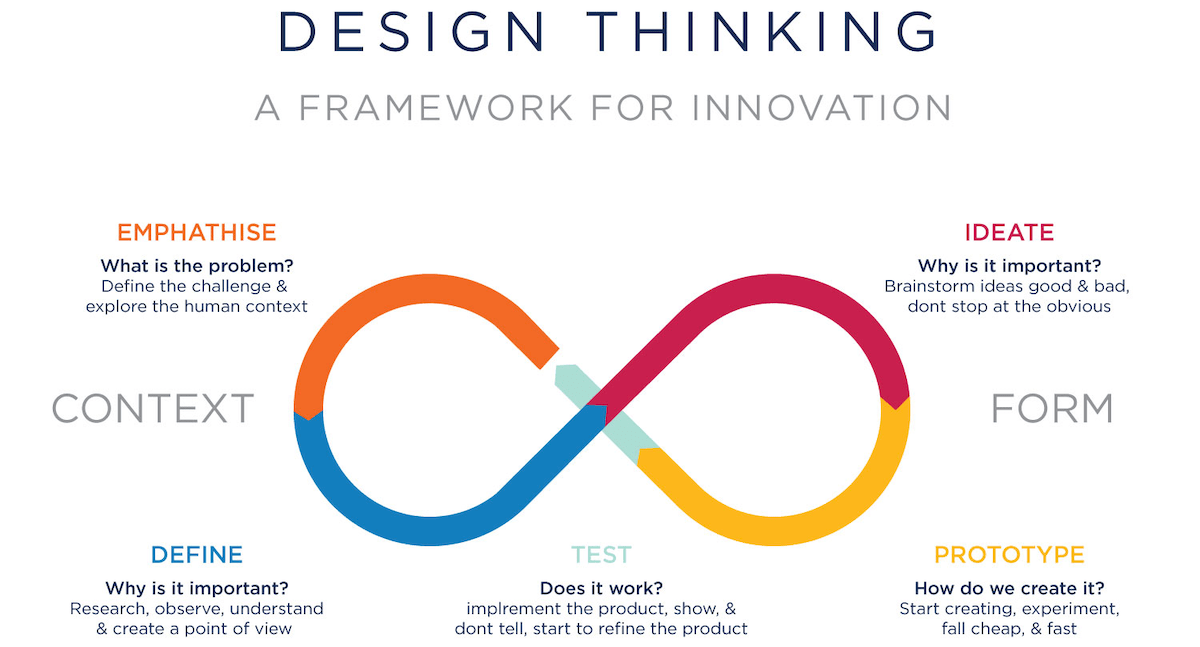
One of the reasons these companies emphasize UX research is that it’s a safe and low-risk way to test and develop ideas. User tests and prototypes are a great way to explore the feasibility of a product and get a better sense of how your users feel about it.
They reduce the risk of uncertainty by answering questions like: Do we have the resources and technology to develop this idea? Can it compete with similar products or services? What do we have to do or change to make it a success? And, more importantly: Are people interested in this?
The true ROI of UX: A competitive edge
As our lives become more entwined with technology, the quality of our experiences with that technology will continue to increase in importance. Consumers will keep evolving more discerning and favor products developed with their needs in mind. Brands that do not meet those expectations and create competitive user-centered products risk losses and eventual failure.
Prioritizing user experience has significant immediate and long-term benefits. Short term, the ROI of UX can mean more conversions, better numbers, or improve SEO. In the long run, the boost in customer satisfaction, reputation, brand awareness, and loyalty is what will ultimately ensure your brand’s future.
Want to offer your users a better product experience? Contact Ideal Studio today and let us know how we can help.

What is experience design?
Experience design involves a methodology for creating experiences that:
- Solve a problem
- Elicit a positive emotional response
- Drive usage and behavior
It’s the approach that can be utilized to design a range of experiences, such as crafting cutting-edge products, formulating marketing strategies, and implementing workplace policies that enhance employee experiences.
The crux of experience design is centered around the user — in what way does the experience you’re crafting integrate into their daily lives? How will they engage with it? In what manner can the experience elicit a particular emotional reaction or incite a targeted behavior?
It’s important to remember that creating a great user experience is not a one-time event. It typically involves multiple rounds of testing and improvement, with continuous feedback from users. Regardless of where you are in the process, keeping the end-user in mind is crucial.
The process begins with a deep understanding of the individual or group for whom the experience is being designed, and this serves as the foundation for all decision-making. From there, a cycle of generating ideas, testing them, and making improvements through iteration is carried out to enhance the experience.
Experienced designers develop empathy for the end-user, which allows them to explore innovative solutions to the problems faced by those people. Additionally, you can hire a dedicated development team to create a tailored solution that can enhance customer satisfaction. This approach focuses on understanding the needs of the user and is used by many successful brands to rethink their product and service experiences. It has played a key role in some of the most successful disruption stories from the last decade.
Putting experience design into practice: the Uber story
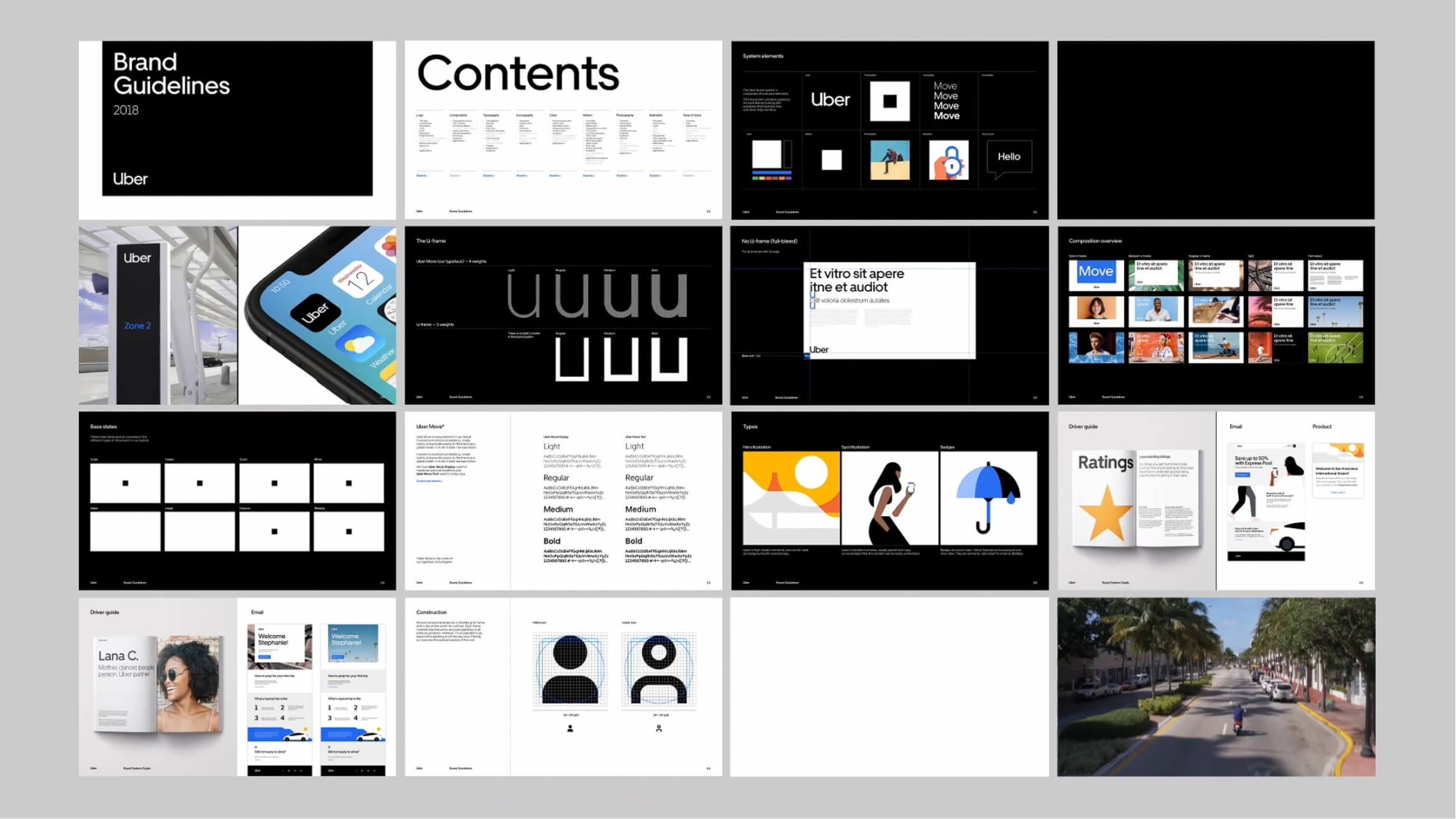
Uber’s launch in 2010 serves as a remarkable case study for successful design thinking. It all began when the founders faced the frustration of not finding a taxi on a rainy night in Paris. While one way to tackle the problem would have been to launch a taxi company and increase the number of taxis to meet demand, Uber’s founders took a different approach. They empathized with the customers and identified their pain points to develop a solution that addresses them effectively.
The founders of Uber launched the company in 2010 after experiencing frustration at not being able to find a taxi in Paris one rainy night. Instead of simply starting a taxi company to meet demand, they decided to approach the problem from the perspective of the customer. They identified pain points such as waiting in line for a taxi, needing cash to pay the driver, and uncertainty about the cost of the fare. These pain points served as the starting point for Uber’s creative thinking in re-imagining the customer experience. By applying an outside-in approach, they were able to successfully disrupt the traditional taxi industry.
In 2020, as the COVID-19 pandemic halted travel, Uber continued to rely on its successful approach. They leveraged their customer insights to identify problems and found a new opportunity. The result was the expansion of UberEats beyond food delivery to include household essentials and prescriptions, addressing an unmet need. This move allowed the ‘get’ side of their business to catch up with the traditional ‘go’ business.
The significance of experience design

Developing a culture of design thinking within an organization can have a widespread impact. Although commonly associated with product development and UX teams, any team within the organization can use this approach by gaining a deep understanding of the end-user and creatively addressing their needs.
Your HR team has the potential to identify workplace dynamics and come up with policies that enhance the experience for your employees. One example is introducing new benefits packages that aid in driving retention and attracting new talent. On the other hand, your customer experience team can identify areas in the buying process that cause friction and take measures to reduce customer effort and boost revenue.
Your marketing team can the ability to detect emerging trends and devise innovative ways to engage and communicate with customers, ultimately increasing customer loyalty. Additionally, your product development team can identify unmet needs and create creative solutions to address consumer problems, resulting in the development of innovative new products and services.
The experience design process
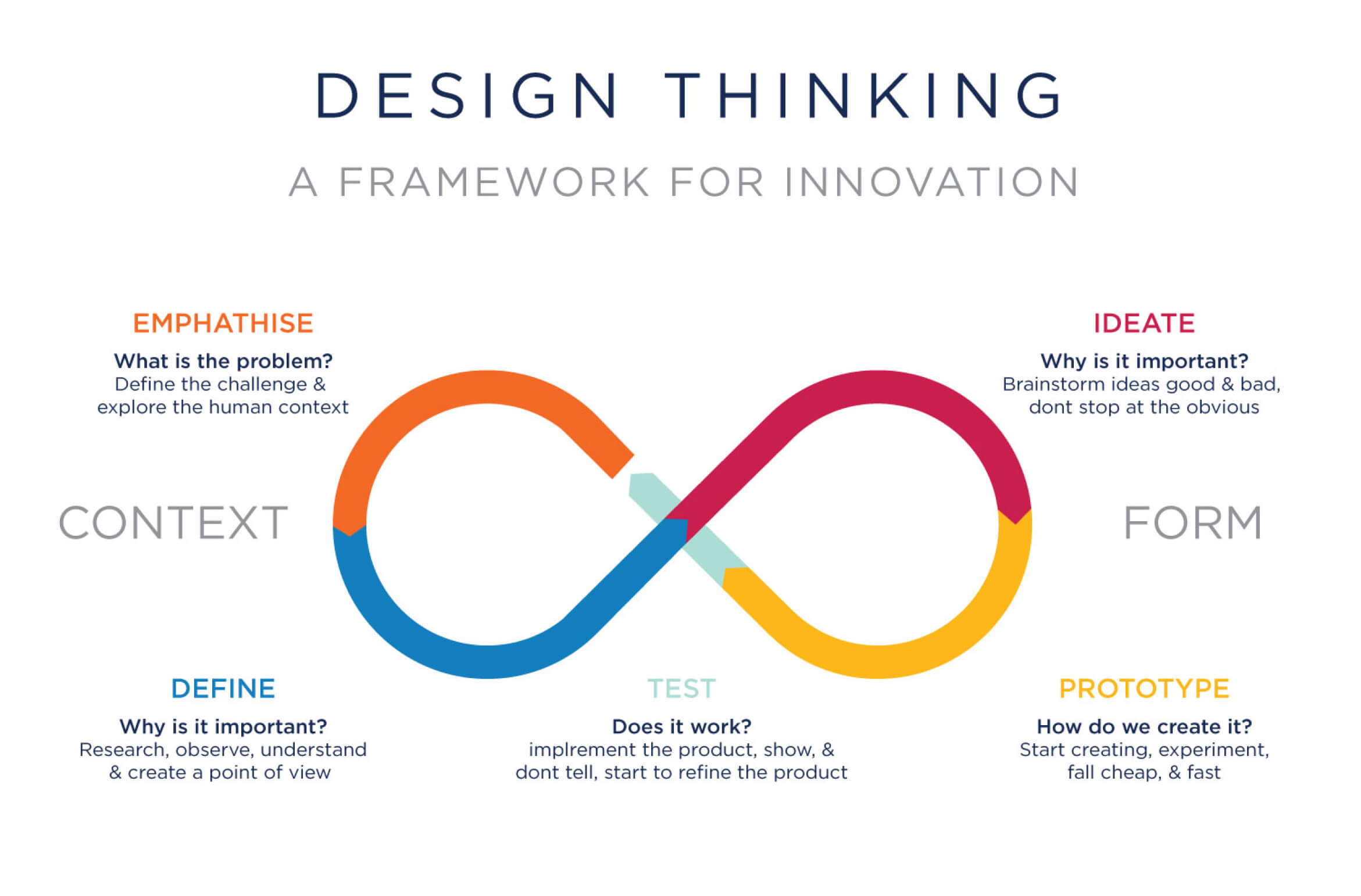
According to the model proposed by the Hasso-Plattner Institute of Design at Stanford (aka d.school), there are 5 key stages to designing an experience
Empathize — understand your users, their worldview, and the beliefs, sentiments, and emotions that drive their decisions
Define — understand your target audience’s needs, and the problems that you’re intending to solve
Ideate — challenging pre-existing ideas on how to solve the problem and apply creative thinking to propose innovative solutions. At this stage, they don’t have to work — you just have to think they might work
Prototype — start to implement the solutions that you’ve ideated in the previous phase with a series of concepts (these are often inexpensive, or ‘rough’ versions compared to a final product of a feature)
Test — see how they fly in the wild. Gather feedback from your prototypes to identify what’s working, what’s not, and what needs to be improved.
It’s worth highlighting that these steps don’t have to follow a strict order. For instance, you could be simultaneously testing ideas with a group of participants while creating a prototype of your product. Furthermore, after each round of feedback, you may need to go back to the ideation phase to figure out how to address any issues that arise.
Tools for experience design research
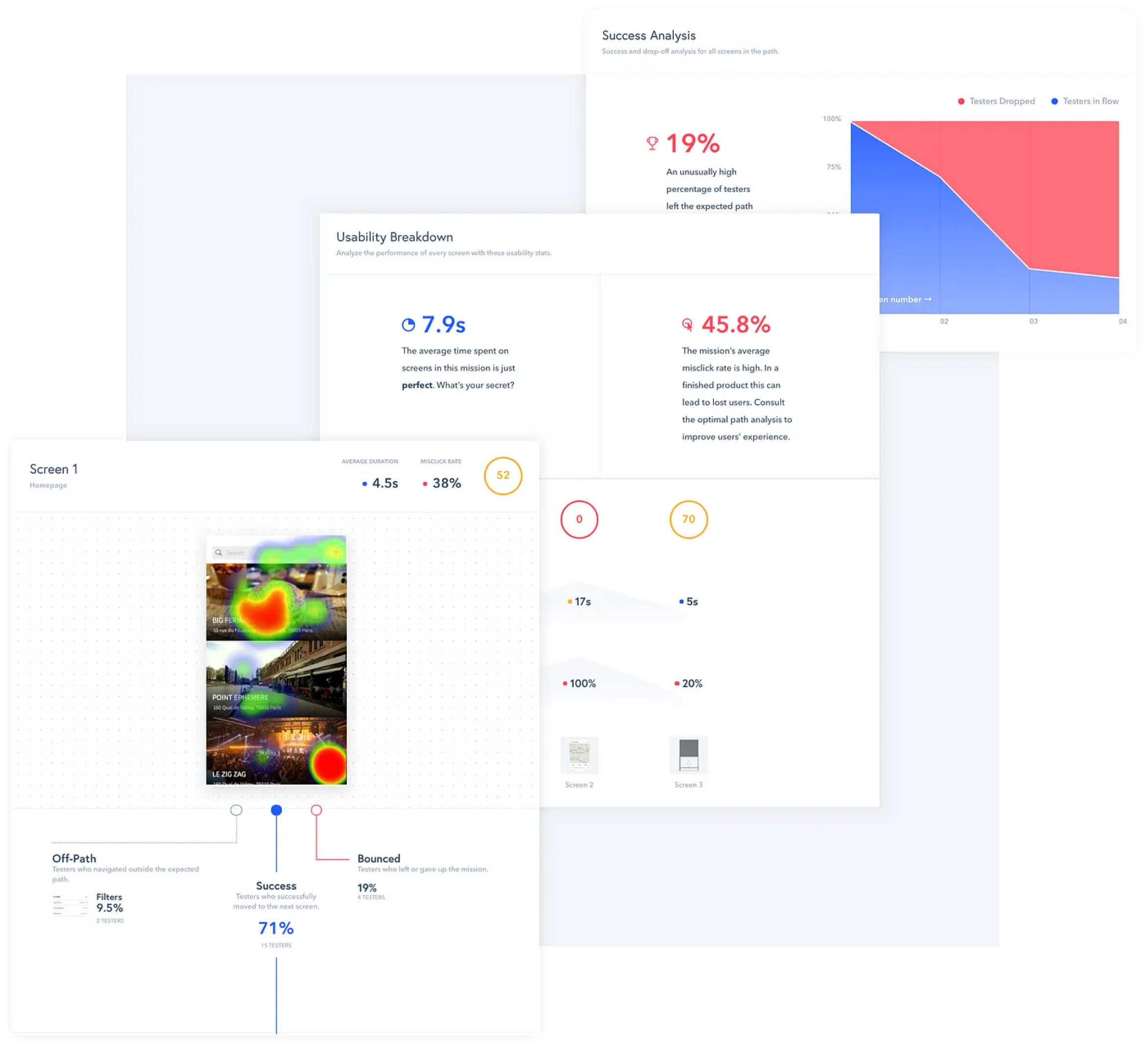
Technology plays a crucial role in designing exceptional experiences. It allows businesses to gather insights at scale from their target audience and make sense of vast amounts of data to identify the necessary actions to create a flawless experience.
Your experience design tools need to enable you to:
Gather feedback from the right people — this often includes those outside of your existing customer base. Continuously conducting research is crucial to identify patterns, trends, and changes in your target market’s behavior, as well as to identify emerging needs. Utilizing online research panels enables you to quickly connect with new audiences and gain a better understanding of them as you start to identify problems and brainstorm solutions.
Identify the right actions — with data coming in from multiple sources, you need to be able to apply powerful analytics to large datasets to identify the right opportunities. At every stage, including identifying emerging needs and user feedback in the testing phase, it is crucial to apply powerful analytics to large datasets to identify the right opportunities and continually iterate and improve the experience.
Share insights effortlessly across teams — no experience is created in a silo. For instance, in the case of a new product, the product development team designs and conceptualizes it, but it’s the marketing team that has to effectively communicate its features and benefits to the target customers. The production team is responsible for building the product within the appropriate cost to make it profitable, while the fulfillment team is accountable for ensuring timely delivery to the customers. At each phase of the process, various teams must make crucial decisions that prioritize the end-user, making it essential to share insights across departments to ensure customer-centricity at every step.
Make insights instantly available — the market research technology available today enables you to get real-time insights from your audience. Being able to quickly identify emerging needs or issues is a significant competitive advantage in today’s fast-paced environment. Traditional market research techniques, which can take months from conducting a survey to reporting on insights, may leave you behind more agile competitors.
Common techniques used in experience design

After gaining an understanding of your target audience and identifying the problem at hand, experience designers typically employ a variety of techniques to close the gap and perfect the experience. These techniques have been tried and tested over time, and include creating user personas, journey mapping, prototyping, and testing. By utilizing these techniques, experience designers are able to create a user-centered approach to design that is effective and efficient in delivering the desired experience to the end-user.
Concept testing — presenting your concepts to your target audience for feedback through studies can be a great starting point in identifying your strongest ideas and making a judgment on which ones are most likely to be successful.
Max Diff and conjoint — in contrast to concept testing, these studies replicate real-world decisions made by your target audience, such as comparing two products on a web page. By having them make trade-offs between different configurations, you can determine the most effective combination of features and test elements like pricing.
Naming studies — come launch, your name says a lot about a product or service. By conducting naming studies, you can gain insights into how your target audience perceives different names and the values and attributes they associate with them. This can help you select the most effective name for your product or service at launch.